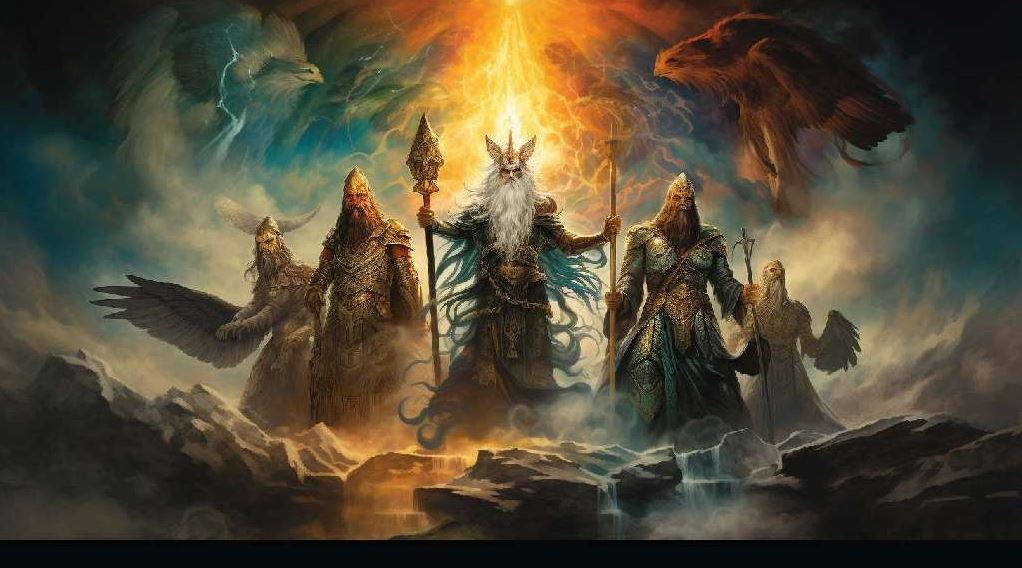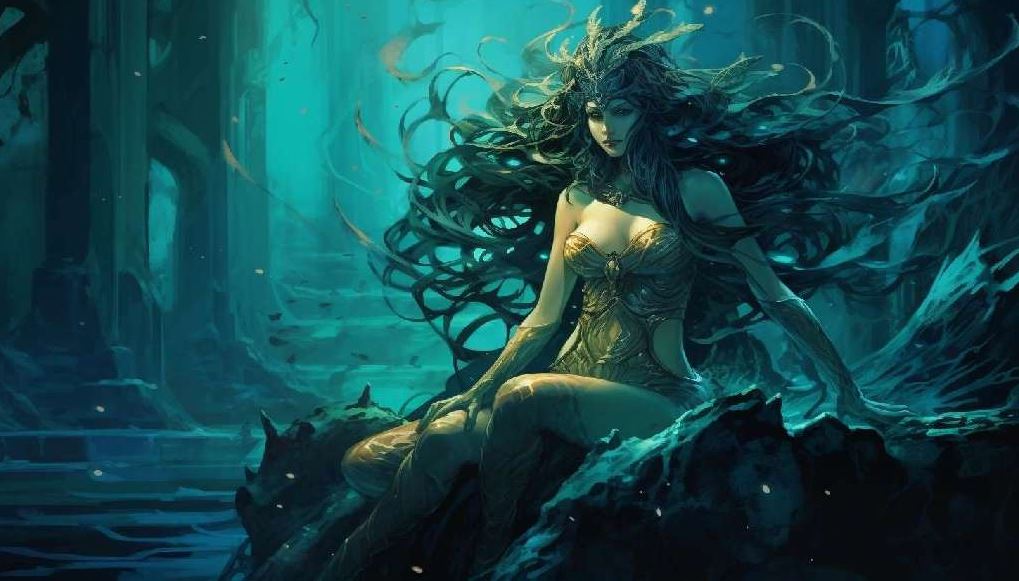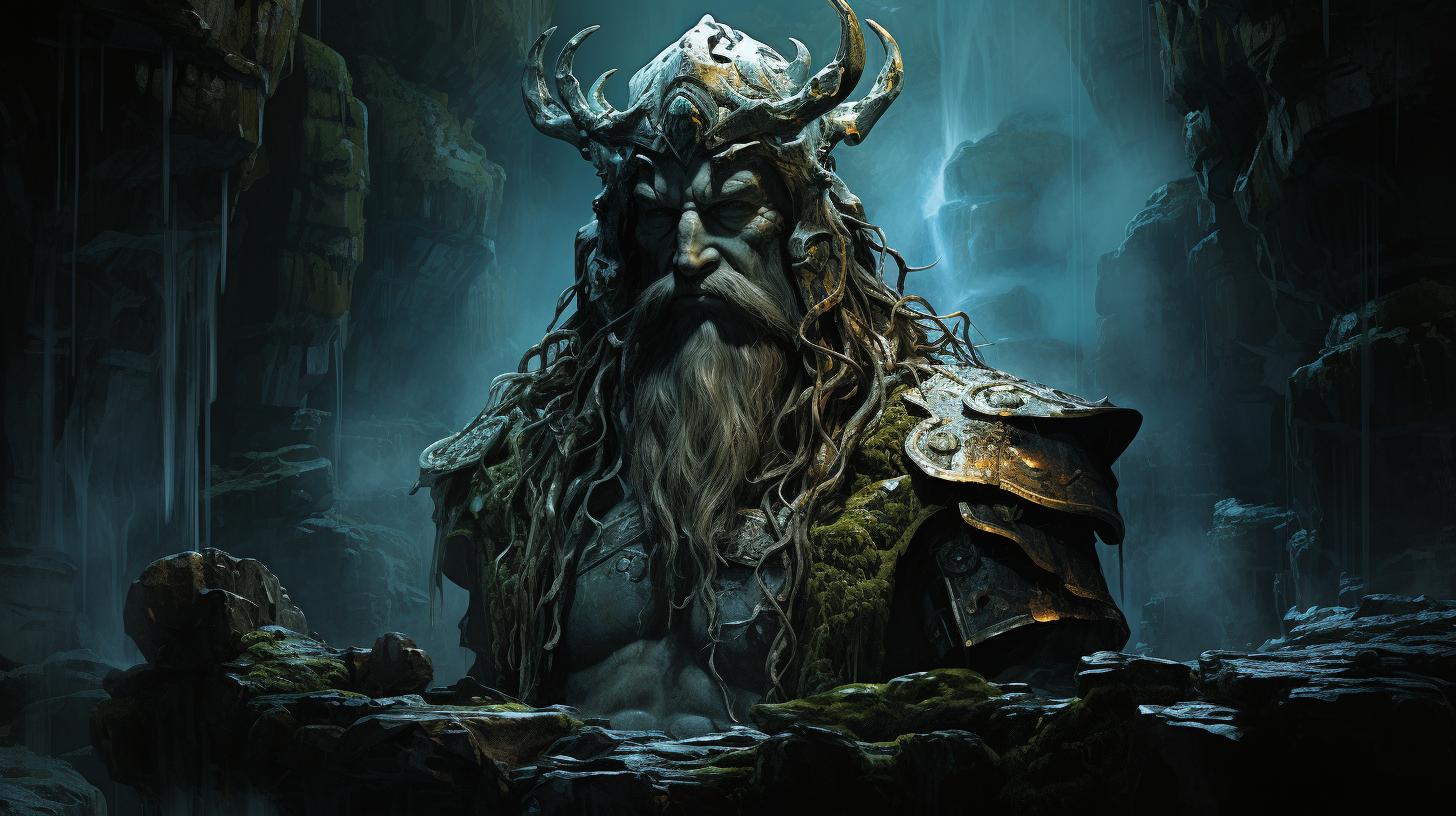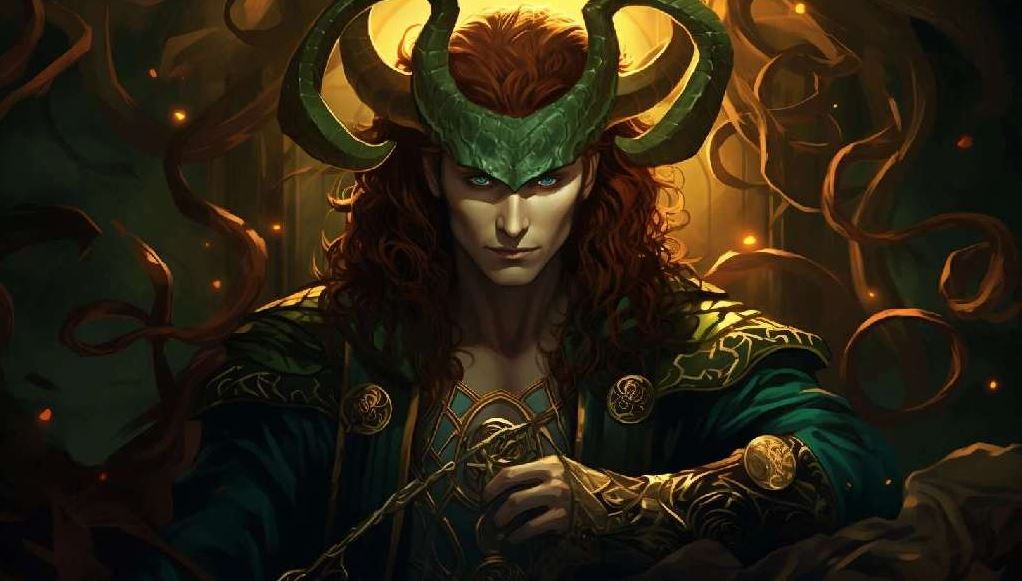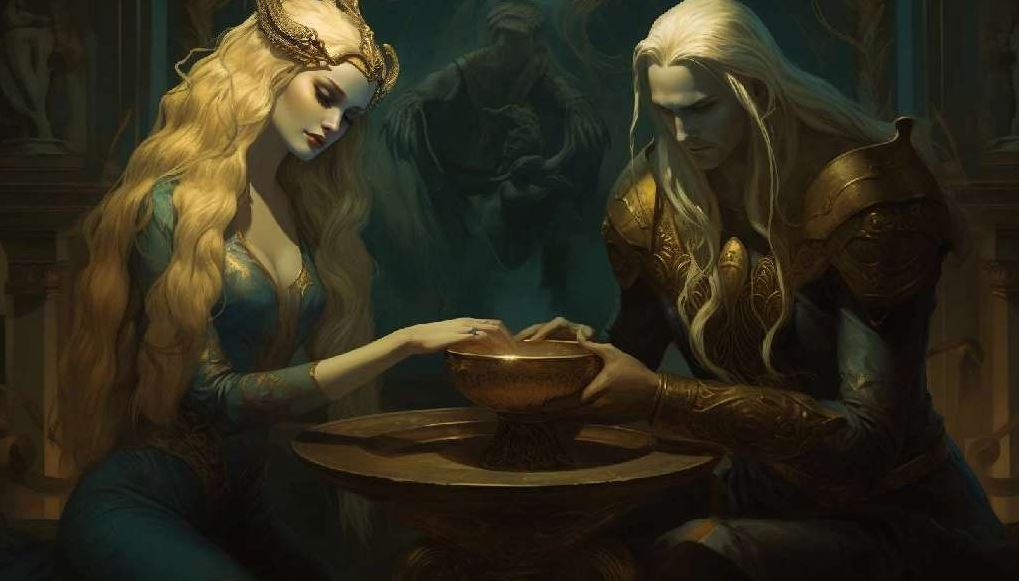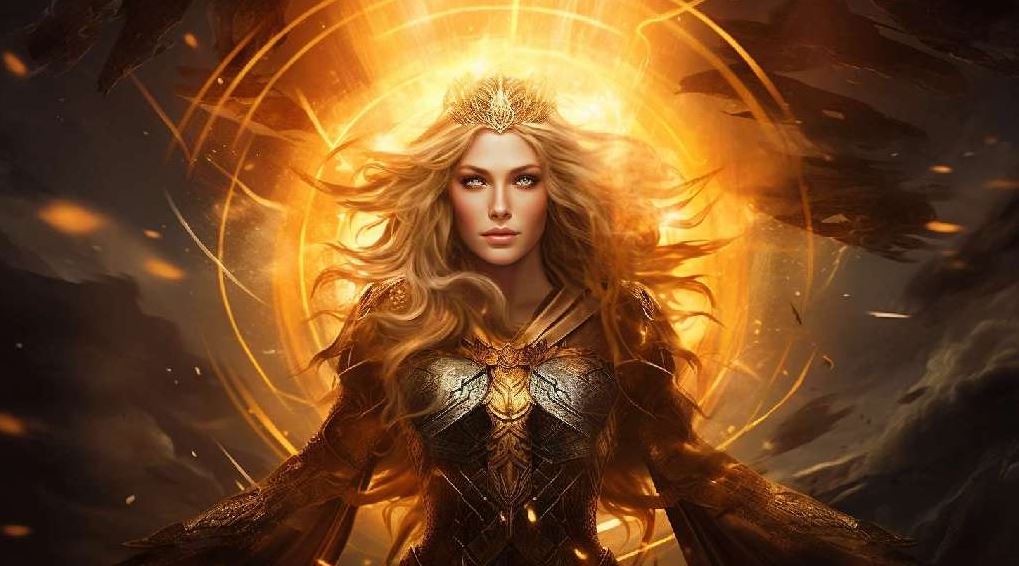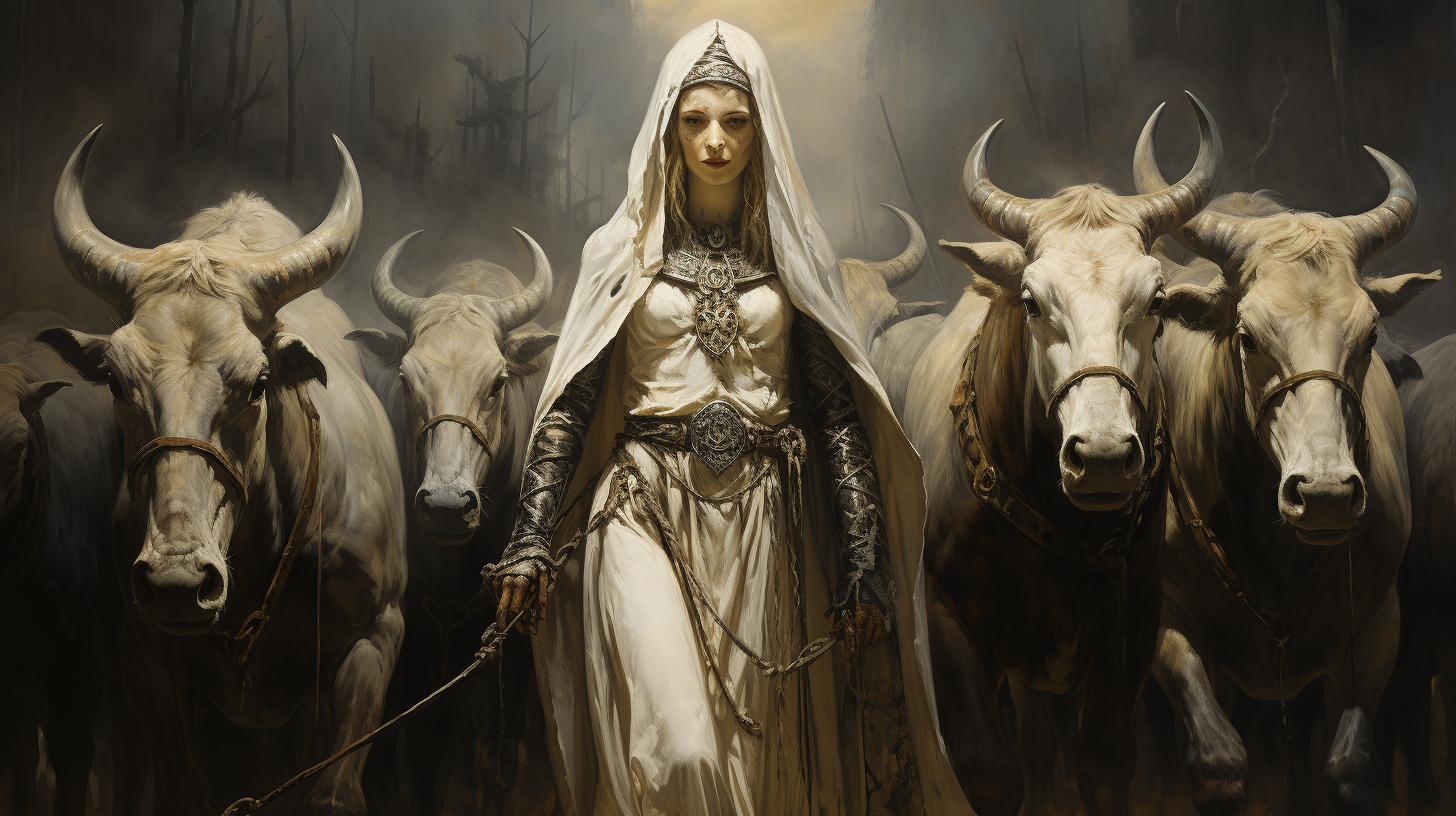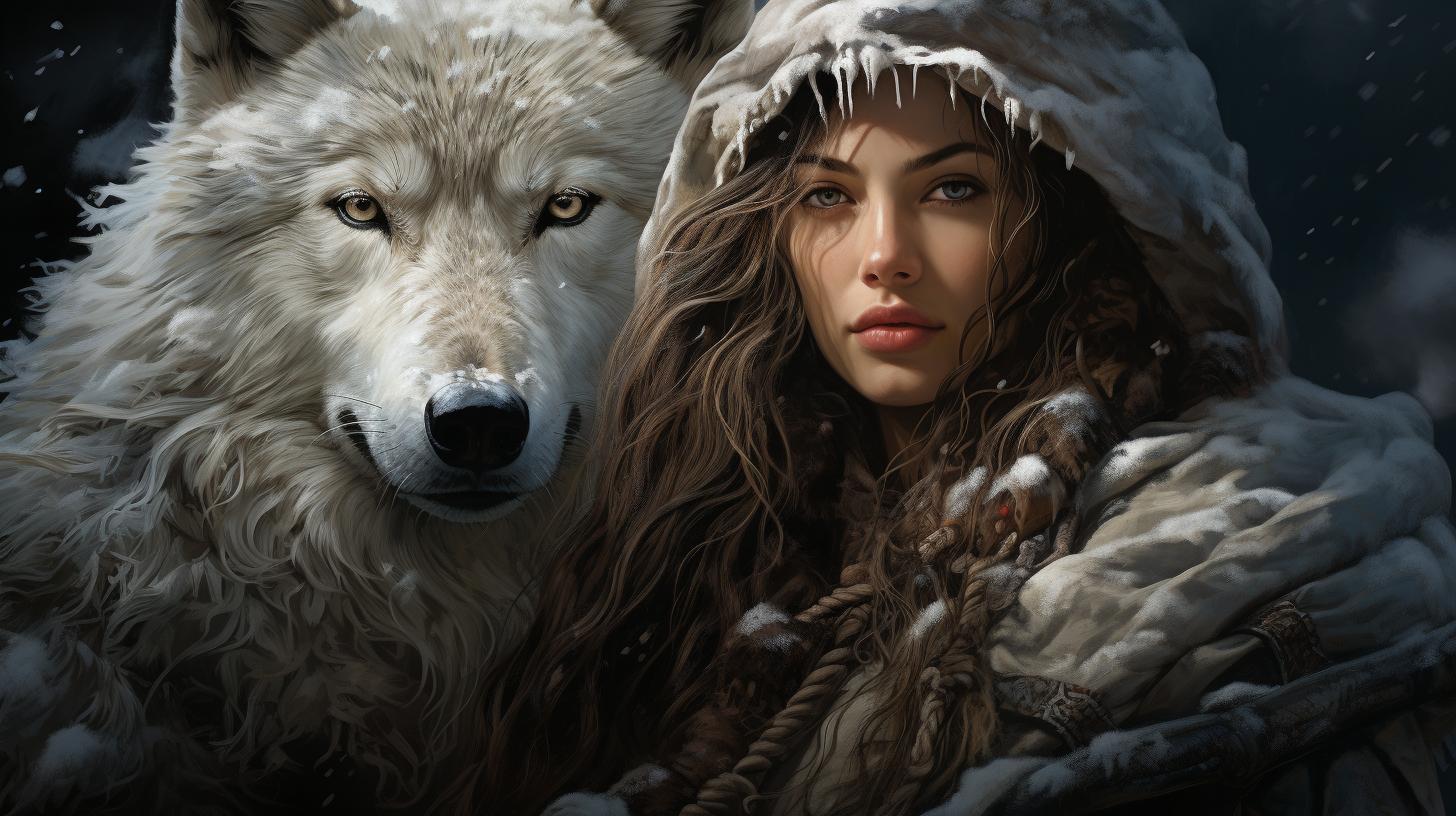Norse God Mani: Explore the Mysteries of Norse Mythology and Viking Culture
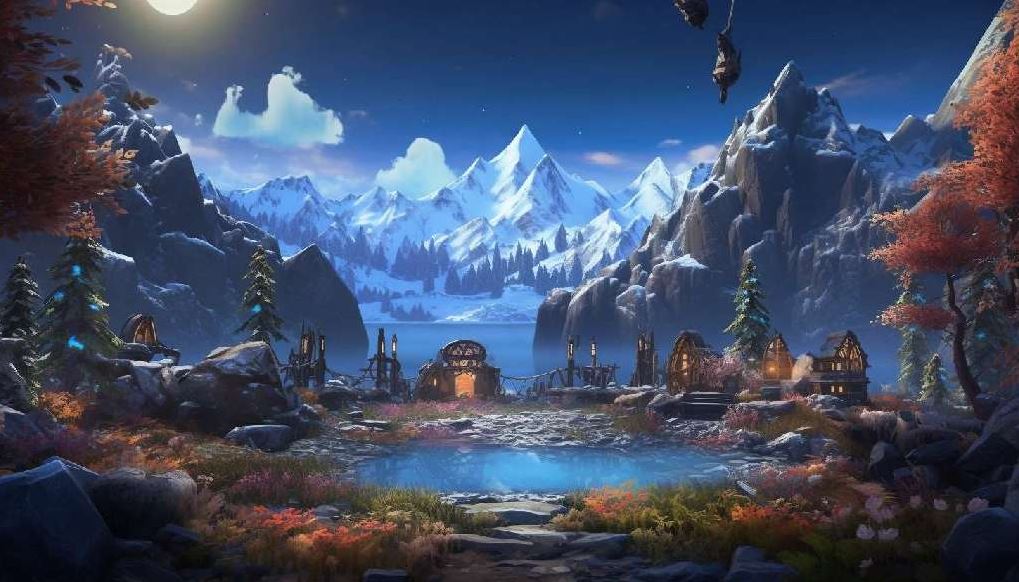
In Norse mythology, Mani is the god associated with the moon. He holds a significant role in the Norse cosmology, intertwined with other gods and celestial bodies. Depicted in ancient texts and portrayed in various stories, Mani’s connection with the moon and its phases is explored.
References to Mani can be found in both Snorri Sturluson’s Prose Edda and the Poetic Edda, which shed light on his symbolism and presence in Norse literature. Additionally, Mani’s influence on seasons, timekeeping, and worship practices in ancient and contemporary Norse paganism is also worth exploring in greater detail.
Mani in Norse Mythology
In Norse mythology, Mani occupies a significant role as the god associated with the moon. He is depicted in ancient Norse texts and mythology, showcasing his fascinating origins, his role within the Norse cosmology, and his relationship with the other Norse gods.
Let us delve deeper into these intriguing aspects of Mani’s presence in Norse mythological lore.
Origins and Depictions of Mani
The origins and depictions of Mani trace back to ancient Norse beliefs and legends. He is said to be the son of Mundilfari, who is personified as the person controlling time.
Mani’s name itself translates to “Moon” in Old Norse, emphasizing his connection to this celestial body. As depicted in artwork and texts, Mani is often portrayed as a serene figure with a radiant visage, a reflection of his association with the moon’s gentle glow.
Mani’s Role in the Norse Cosmology
Mani’s role in the Norse cosmology is integral to understanding the mythology surrounding him. According to Norse beliefs, the universe consisted of nine worlds, with each world having its own divine beings and celestial bodies.
Mani took his place in the cosmos as the god of the moon, overseeing the mystical realm of the night sky. His presence influenced the natural order of the Norse cosmos and played a vital role in the cycle of time and seasons.
Mani’s Relationship with the Other Norse Gods
Mani and the Moon
Mani, a significant figure in Norse mythology, is revered as the god of the moon. This celestial deity holds great importance in the Norse cosmology, with a connection to the lunar cycles and various stories and myths associated with the moon.
Let us delve deeper into the intriguing realm of Mani and his association with the moon.
Mani as the God of the Moon
Mani is recognized as the divine entity responsible for overseeing the moon in Norse mythology. Considered as one of the heavenly bodies that contributed to the cosmological balance, Mani’s role as the god of the moon holds immense significance.
He is often portrayed as a radiant figure, traveling through the night skies and casting his gentle light on the world below.
Mani’s Connection with the Phases of the Moon
As the god of the moon, Mani’s connection with the lunar phases is an essential aspect of his mythology. Just like the moon waxes and wanes, Mani’s portrayal signifies the changing nature of the lunar cycle.
From the new moon to the full moon and back to its diminishing state, Mani’s presence embodies the cyclical nature of time and the moon’s changing appearance in the night sky.
Myths and Stories about Mani and the Moon
The mythology surrounding Mani and the moon is rich with tales and legends that explore his interactions with other mythical beings and his role in shaping the Norse world. One such story involves Mani’s sister, Sol, the goddess of the sun, with whom he alternates across the sky.
Their continuous cycle and their relationship create a harmonious balance between light and darkness, day and night.
Additionally, Mani’s interactions with other gods and the impact of his lunar influence on the natural world provide further intrigue. These myths shed light on the importance of the moon in Norse culture and offer insights into the reverence and worship associated with Mani as the god of the moon.
3. Mani in the Prose Edda and Poetic Edda
References to Mani in Snorri Sturluson’s Prose Edda
Snorri Sturluson’s Prose Edda, a collection of Old Norse myths and stories, offers valuable references to Mani, shedding light on this enigmatic deity. In Gylfaginning, a section of the Prose Edda, Mani is depicted as the brother of Sol, the sun goddess.
They were placed in the heavens by the gods to guide the chariots that carry the sun and moon across the sky.
The Prose Edda also describes a tale where the gods entrust Mani with the task of keeping the moon’s path steady, ensuring its consistent journey across the night sky. These references emphasize Mani’s role as a celestial figure, intricately connected to the movement and presence of the moon.
Mani’s Mention in the Poetic Edda
The Poetic Edda, a collection of Old Norse poems, provides further glimpses into the significance of Mani within Norse mythology. In the poem “Grimnismal,” Mani is mentioned as one of the celestial bodies that Odin, the Allfather god, names when recounting his vast knowledge of the universe.
This inclusion highlights Mani’s importance among the divine entities that govern the cosmos.
Another significant poem, “Haustlong,” attributes Mani as the silver-wheeled god followed by the moon’s path, reinforcing his connection to the lunar sphere. These poetic mentions add depth to Mani’s character and demonstrate the poets’ recognition of his celestial authority.
Interpretations and Symbolism of Mani’s Presence in Eddic Literature
The presence of Mani in both the Prose Edda and Poetic Edda sparks a myriad of interpretations and symbolism within Norse mythology. Scholars have delved into his portrayal as a deity associated with the moon, viewing him as a spiritual guide illuminating the night and carrying metaphorical meanings of introspection and the passage of time.
Mani’s connection to the moon’s phases symbolizes the ever-changing nature of existence and the cyclical patterns observed in nature. This symbolism is expanded upon in various poetic compositions, emphasizing Mani’s association with the lunar cycle and its ties to the rhythm of life.
Eddic literature’s inclusion of Mani reflects the Norse people’s fascination with celestial bodies and their recognition of the moon’s influence on their daily lives. The interpretations and symbolism surrounding Mani’s presence offer a deeper understanding of the cosmological beliefs and spiritual values held by the ancient Norse society.
Mani and Norse Cosmology
Mani, the Norse god of the moon, holds a significant place within the vast and intricate Norse cosmology. Let’s explore Mani’s role in the nine worlds, his relationship with other celestial bodies, and his influence on the seasons and timekeeping.
Mani’s Place in the Nine Worlds
Within the Norse cosmology, Mani resides in the realm of Álfheimr, the world of the elves, which lies adjacent to the realm of Midgard, the world of humans. Here, Mani traverses the skies, illuminating the night with the soft glow of the moon.
Mani’s Relationship with the Other Celestial Bodies
Mani shares a close connection with his sister Sol, the goddess of the sun. Together, they symbolize the eternal dance between day and night, light and darkness. Norse mythology also suggests that Mani has an association with the stars, as they are often seen accompanying him on his nightly journeys through the heavens.
Mani’s Influence on the Seasons and Timekeeping
Mani’s presence in the skies influences the seasons and serves as a guiding light for timekeeping. In Norse traditions, Mani’s phases dictate the lunar calendar, providing a basis for tracking months and the passage of time.
The Norse people relied on Mani’s cycles to mark the various seasonal changes, including the timing of important agricultural activities.
In addition to its practical applications, Mani’s influence on the seasons and timekeeping has deeper spiritual meanings within Norse cosmology. The waxing and waning of the moon are often associated with the ebb and flow of life, symbolizing growth, decay, and rebirth.
Understanding Mani’s involvement in the rhythms of the cosmos offers valuable insights into how Norse culture perceived celestial phenomena and their interconnectedness with everyday life.
Worship and Rituals Associated with Mani
Explore the ancient and contemporary worship practices and rituals associated with the Norse god Mani.
.
Ancient Norse Practices Involving Mani
Ancient Norse societies held deep reverence for the gods, including Mani, whom they worshipped through various practices and rituals. Some of the notable ancient Norse practices involving Mani were:
- Offerings and Sacrifices: Devotees would make offerings and sacrifices to honor Mani, such as food, drink, and valuable items.
- Moonlit Ceremonies: Rituals dedicated to Mani were often conducted under the moonlight, symbolizing his connection with the lunar sphere.
- Prayers and Incantations: Followers would recite prayers and incantations, seeking Mani’s guidance, protection, and blessings.
Modern Interpretations and Celebrations of Mani
In contemporary times, there has been a resurgence of interest in Norse mythology and pagan practices, leading to the development of modern interpretations and celebrations of Mani.
- Full Moon Gatherings: Many contemporary pagans organize gatherings during full moons to honor and pay homage to Mani. These events often involve rituals, storytelling, music, and dance.
- Meditation and Reflection: Individuals may engage in meditation and self-reflection during certain lunar phases to connect with Mani’s energy and seek spiritual enlightenment.
- Jewelry and Symbols: People may wear jewelry adorned with lunar symbols or incorporate lunar imagery into their personal altars as a way to show devotion to Mani.
Mani’s Relevance in Contemporary Norse Paganism
Within the realm of contemporary Norse paganism, Mani holds a significant place and continues to inspire devotion and spiritual practices.
- God of Inspiration: Many practitioners see Mani as a source of inspiration and creativity, seeking his guidance in artistic pursuits and spiritual growth.
- Connection with Nature: Mani’s association with the moon ties him closely to the cycles of nature, attracting those who embrace a deep connection with the natural world.
- Divination and Lunar Magic: Some followers of Norse paganism turn to Mani for divinatory practices and lunar magic, harnessing the moon’s energies for spiritual insights and spellcasting.
Overall, the worship and rituals associated with Mani offer a profound way for individuals to connect with the mysteries of the moon and tap into the rich tapestry of Norse mythology and spirituality.
….











